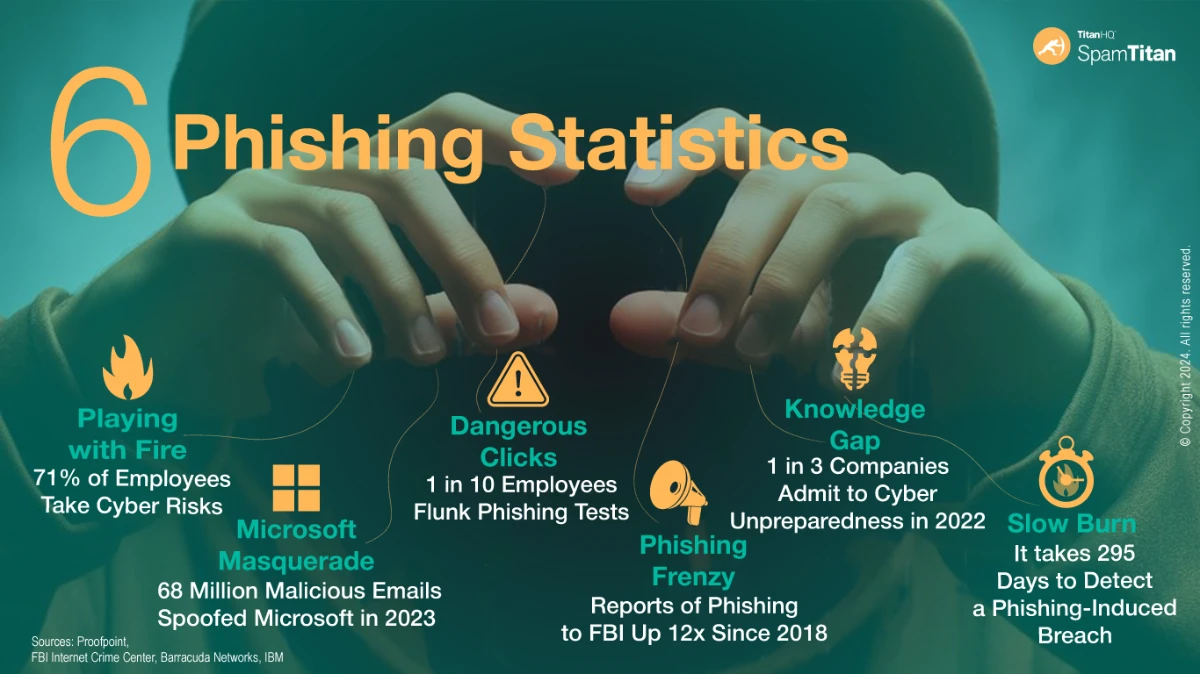Phishing attacks are mostly conducted via email but there has been a major increase in hybrid phishing attacks over the past 12 months, especially callback phishing. Here we explain what callback phishing is, why it poses such a threat to businesses, and why threat actors are favoring this new approach.
What is Callback Phishing?
Email phishing is used for credential theft and malware distribution, but one of the problems with this type of phishing is most businesses have email security solutions that scan inbound emails for malicious content. Phishing emails and malicious files distributed via email are often identified as such and are rejected or quarantined. Some threat actors conduct voice phishing, where an individual is contacted by telephone, and attempts are made to trick them into taking an action that benefits the scammer using a variety of social engineering tactics.
Callback phishing is a type of hybrid phishing where these two methods of phishing are combined. Initially, an email is sent to a targeted individual or company that alerts the recipient to a potential problem. This could be an outstanding invoice, an upcoming payment or charge, a fictitious malware infection or security issue, or any of a long list of phishing lures. Instead of further information being provided in an attachment or on a website linked in the email, a telephone number is provided. The recipient must call the number for more information and to address the issue detailed in the email.
The phone number is manned by the threat actor who uses social engineering techniques to trick the caller into taking an action. That action is usually to disclose credentials, download a malicious file, or open a remote desktop session. In the case of the latter, the remote desktop session is used to deliver malware that serves as a backdoor into the victim’s computer and network.
This hybrid approach to phishing allows threat actors to get around email security solutions. The only malicious element in the initial email is a phone number, which is difficult for email security solutions to identify as malicious and block. That means the emails are likely to reach their targets.
Major Increase in Callback Phishing Attacks
Callback phishing was adopted by the Ryuk ransomware threat group in 2019 to trick people into installing BazarBackdoor malware, in a campaign that was dubbed BazarCall/BazaCall. Typically, the lure used in these attacks was to advise the user about an upcoming payment for a subscription or the end of a free trial, with a payment due to be automatically taken unless the trial/subscription is canceled by phone.
The Ryuk ransomware operation is no more. The threat actors rebranded as Conti, and the Conti ransomware operation has also now shut down; however, three threat groups have been formed by members of the Conti ransomware operation – Silent Ransom, Quantum, and Zeon – and all have adopted callback phishing as one of the main methods for gaining initial access to victims’ networks for conducting ransomware attacks. These three groups impersonate a variety of companies in their initial emails and trick people into believing they are communicating with a genuine company. The aim is to get the user to establish a remote desktop session. While the user is distracted by the call, a second member of the team uses that connection to install a backdoor or probe for ways to attack the company, without the user being aware what is happening.
Callback phishing is also used by other threat groups for credentials theft and malware distribution, often by impersonating a cybersecurity firm and alerting the user to a security threat that needs to be resolved quickly. These attacks see the user tricked into installing malware or disclosing their credentials. According to cybersecurity firm Agari, phishing attacks increased by 6% from Q1, 2022 to Q2, 2022, and over that same time frame hybrid phishing attacks increased by an incredible 625%.
How to Protect Against Callback Phishing Attacks
As is the case with other forms of phishing, the key to defending against attacks is to implement layered defenses. Email security solutions should be implemented that perform a range of checks of inbound emails to identify malicious IP addresses. Email security solutions such as SpamTitan incorporate machine learning mechanisms that can detect emails that deviate from those normally received by an organization. Multi-factor authentication should be implemented on accounts to block attempts to use stolen credentials.
The best defense against callback phishing is to provide security awareness training to the workforce. Employees should be told about the social engineering tactics used in these attacks, the checks everyone should perform before responding to any email, and the signs of callback phishing to look out for. Callback phishing simulations should also be conducted to gauge how susceptible the workforce is to callback phishing. A failed simulation can be turned into a training opportunity to proactively address the lack of understanding.
TitanHQ offers a comprehensive security awareness training platform for businesses – SafeTitan – that covers all forms of phishing and the platform included a phishing simulator for conducting phishing tests on employees. For more information, give the TitanHQ team a call today.

